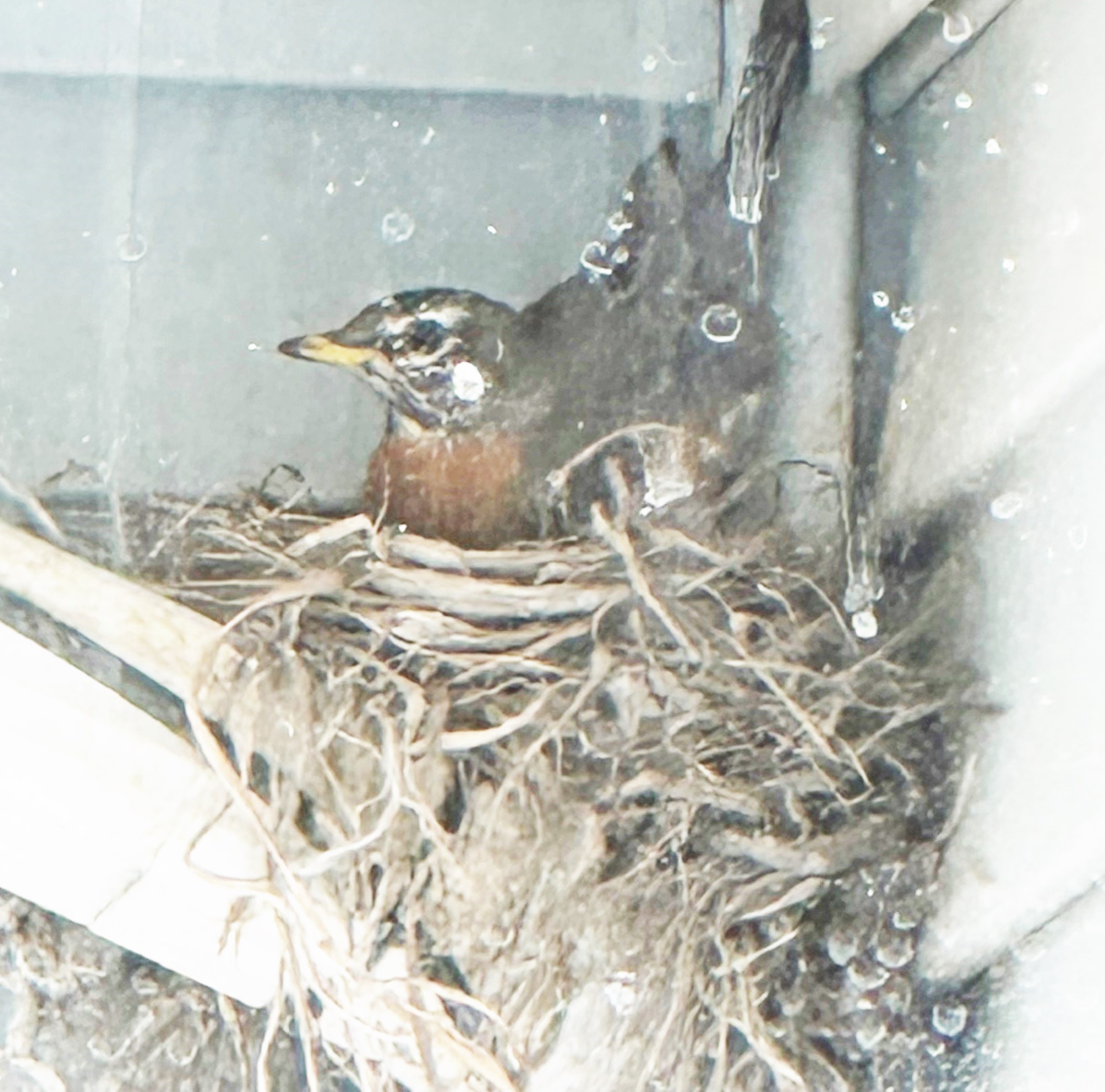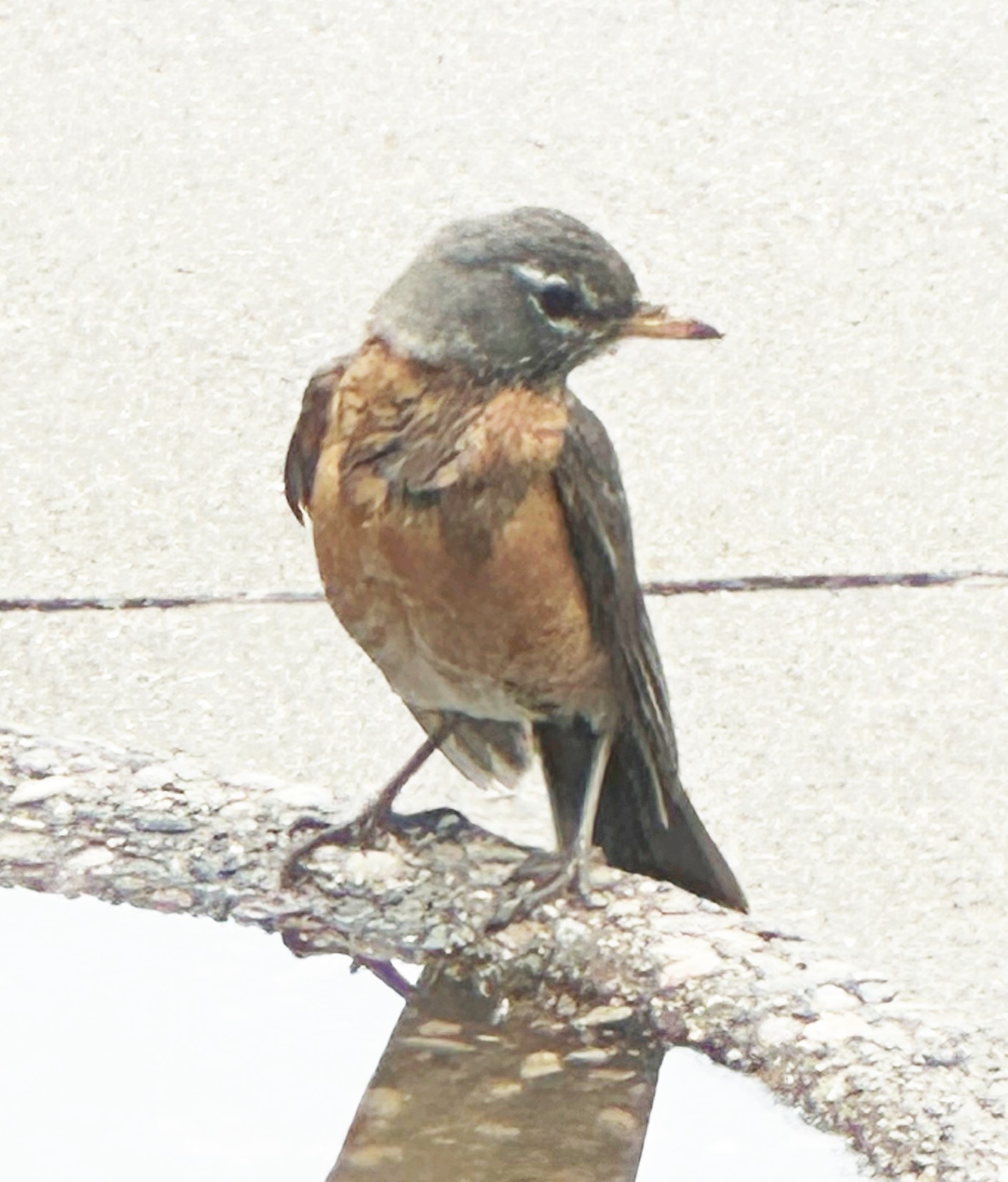All of us - and that includes me - are only allowed 2 photos per post in this Public Forum. This has to do with website storage space. So I will continue telling you about Day 7 over several posts.
I always thought in the animal world, just about every individual of a certain species looks like every other individual in that species. For example: every Monarch Butterfly looks like every other Monarch butterfly. Every hammerhead shark looks like every other hammerhead shark. Every raccoon looks like every other raccoon. I was so wrong - and totally forgot that we human beings are also part of the animal world. Our differences are obvious, but the differences in other animals are there - we just do not have eyes trained to notice. Take a look at the face of this female robin and compare it to photos of robins in your field guide and also to the ones in the free ebook you downloaded from this website and you will see there are differences - tiny differences - but once you know what to look for, they become more obvious. If you have downloaded and read my ebook on the American Robin, you know I devoted a section to describing the features of the robin - particularly the face.
All robins have incomplete eye-rings and a white throat with very fine dark lines. But the thickness of the incomplete eye-rings and the appearance of the throats vary from robin to robin. And sometimes there are tiny stray white feathers or even tiny areas of white on the face of an individual robin. This is the case with our female. She has more white on her face than most robins. Now that I have realized that, I can compare her to other robins in our yard and I will most often be able to pick her out.
Also look at her breast - and compare it to her mate's in the bird bath (photo in previous post - the first one for Day 7). She looks like she has removed some of the feathers on her breast and she may have - some robins will do this to line the cup of their nest. (The first photo in this post is from Day 3. The second photo is from this morning - Day 7. See the change in her upper breast?) Looking at the tall sides of her nest, she may be ready to do just that. And notice what a deep brick red the breast of her mate is. You will have to take my word for it right now, but when this male is in the sunlight, that breast is a gorgeous, deep, rich shade. Hers is lighter and not as rich. This is most obvious when they are together and a good place to see this is at the birdbath. We have had so much rain here in central Illinois for well over a month and there is more rain in the forecast this week on most days. but if you are watching the livestream on the birdbath cam on a sunny day, watch for these 2 robins and compare their breasts and faces.
All of us - and that includes me - are only allowed 2 photos per post in this Public Forum. This has to do with website storage space. So I will continue telling you about Day 7 over several posts.
I always thought in the animal world, just about every individual of a certain species looks like every other individual in that species. For example: every Monarch Butterfly looks like every other Monarch butterfly. Every hammerhead shark looks like every other hammerhead shark. Every raccoon looks like every other raccoon. I was so wrong - and totally forgot that we human beings are also part of the animal world. Our differences are obvious, but the differences in other animals are there - we just do not have eyes trained to notice. Take a look at the face of this female robin and compare it to photos of robins in your field guide and also to the ones in the free ebook you downloaded from this website and you will see there are differences - tiny differences - but once you know what to look for, they become more obvious. If you have downloaded and read my ebook on the American Robin, you know I devoted a section to describing the features of the robin - particularly the face.
All robins have incomplete eye-rings and a white throat with very fine dark lines. But the thickness of the incomplete eye-rings and the appearance of the throats vary from robin to robin. And sometimes there are tiny stray white feathers or even tiny areas of white on the face of an individual robin. This is the case with our female. She has more white on her face than most robins. Now that I have realized that, I can compare her to other robins in our yard and I will most often be able to pick her out.
Also look at her breast - and compare it to her mate's in the bird bath (photo in previous post - the first one for Day 7). She looks like she has removed some of the feathers on her breast and she may have - some robins will do this to line the cup of their nest. (The first photo in this post is from Day 3. The second photo is from this morning - Day 7. See the change in her upper breast?) Looking at the tall sides of her nest, she may be ready to do just that. And notice what a deep brick red the breast of her mate is. You will have to take my word for it right now, but when this male is in the sunlight, that breast is a gorgeous, deep, rich shade. Hers is lighter and not as rich. This is most obvious when they are together and a good place to see this is at the birdbath. We have had so much rain here in central Illinois for well over a month and there is more rain in the forecast this week on most days. but if you are watching the livestream on the birdbath cam on a sunny day, watch for these 2 robins and compare their breasts and faces.
Uploaded files:


